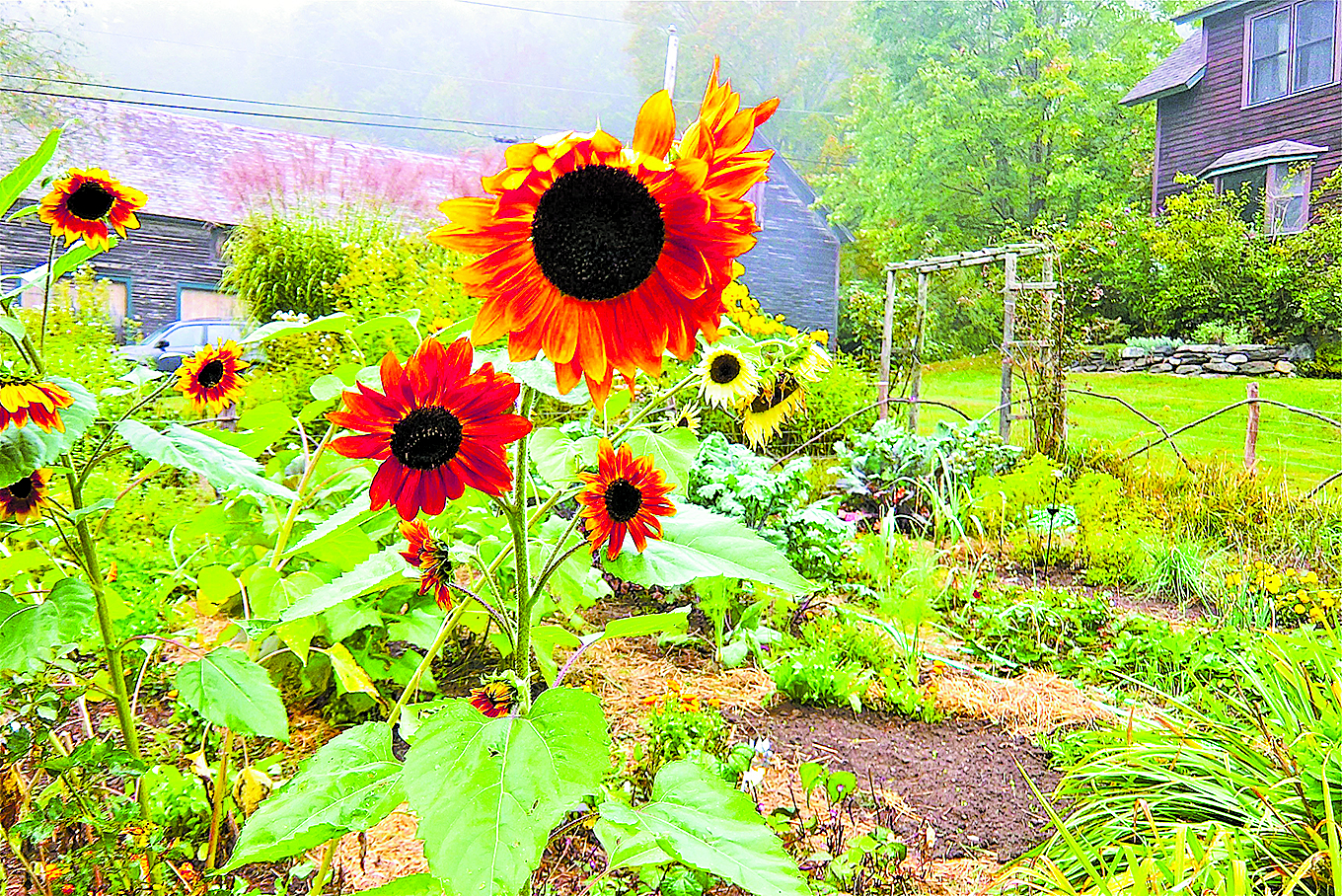
A front garden instead of a lawn, complete with perennial greens, annual veggies, culinary herbs, medicinal plants, flowers, and berries such as honeyberry, gooseberry, alpine strawberry, and gojiberry. Photo Credit Kay Cafasso
By Kay Cafasso
If you are looking back on the last growing season discouraged that you still do not have the garden you dream of, don’t despair! This is the perfect time to plan your garden.
This is a busy season for tending to all late-season garden tasks and reviewing the year. Along with final transplanting, composting, and mulching, late fall and winter provide a time for planning. Start with making notes on what you have learned about the land and the needs of the residents. Your findings can be included in well-planned multi-purpose garden designs that can combine diversity, beauty, recreation, and nourishment.
Here are other tasks for the end of the growing season:
-
As you plan, remember always to keep in mind the extremes in climate and weather patterns, to anticipate next year’s conditions.
-
Consider the needs of beneficial insects and pollinators. If there were times in the growing season when your garden lacked flowers and nectar, research the plants that would provide for them, and include them in your plans. Remember to be sure they will thrive in your garden’s growing conditions, considering its sunlight, soil, moisture, neighboring plants, and other conditions.
-
When reviewing the potential harvest for next year, consider gaps in last year’s harvest of greens, herbs, and berries and fruits. Even in late October, it is possible still to be harvesting Asian pears, apples, kousa fruits, raspberries, strawberries, and gojiberries. You can have a harvest almost throughout the year, if the garden is designed well.
-
Consider planting some lesser known fruits that are hardy in our cold northeastern climate.
-
Learn more about the soils on your property. Gather garden soil samples and have them analyzed. Many leading agricultural colleges have laboratories and will give you information on the soil samples you send them for a small fee. This will guide you with improving the soil.
-
Familiarize yourself with the seeds for medicine, tea and spices that you would like to grow, and note when they should be sown.
-
Map out your property and keep notes through the seasons, reading clues from the existing vegetation, getting to know the site even better at all seasons, and seeking best locations for any new landscape elements.
You might benefit from a local permaculture designer’s support with planning and planting. A designer will help with learning the big picture and studying the whole system of the property. This should help you design for greater ecological sense, as well as economics, efficiency, productivity, and lower maintenance practices. A designer should help with the water flow on the property, the pathways and access routes, compost systems, management strategies, and more. You should also get information on how your land can fit in with the needs of the area around you and whether you can create unique services or products to help the resilience of your local community.
You might consider attending a permaculture design certification course to learn these skills for yourself. In a certification course, you can practice ecological design alongside leading designer, learn from visits to permaculture demonstration sites, network, and gather many sustainable living skills.
Autumn and winter are important times for developing your landscape. This is the perfect time to create the vision for next year.
Kay Cafasso is a lead instructor of the Permaculture Design Certification Course and an ecological garden designer with Sowing Solutions Permaculture Design & Education at www.PermacultureSeries.org








Leave a Reply